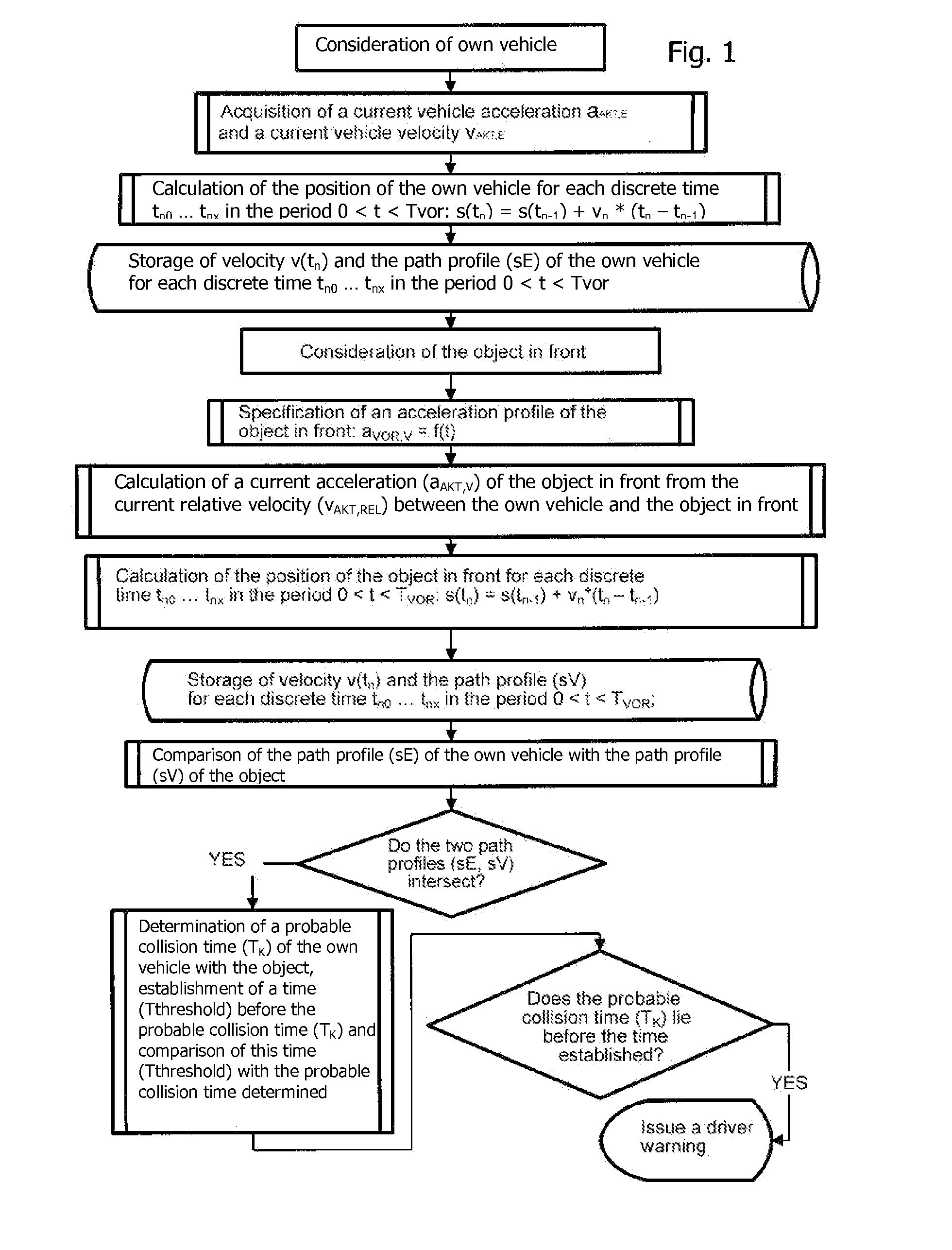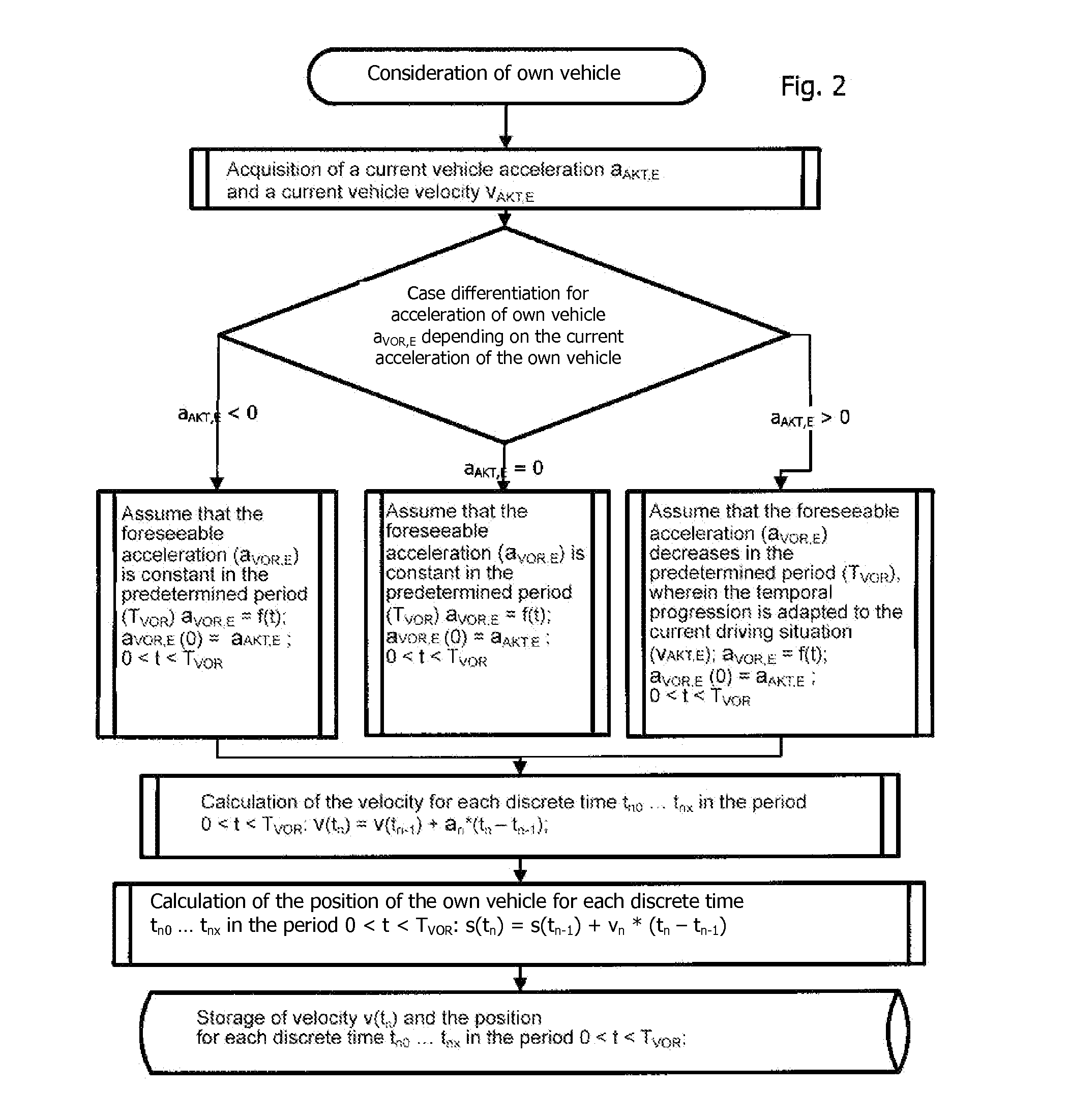Method for Detecting Critical Driving Situations of Lorries or Passenger Vehicles and Method for Avoiding Collisions
a technology for passenger vehicles and critical driving situations, applied in the direction of braking systems, instruments, analogue processes for specific applications, etc., can solve the problems of insufficient exclusive consideration of the limit time up to collision, inability to avoid collision, and inability to initiate automatic braking processes. the problem of not being able to avoid collision, etc., to achieve the effect of avoiding collision, not at all or unnecessarily, and avoiding collision
- Summary
- Abstract
- Description
- Claims
- Application Information
AI Technical Summary
Benefits of technology
Problems solved by technology
Method used
Image
Examples
Embodiment Construction
[0064]As FIG. 9 illustrates, the situation of a vehicle in front of the own vehicle is detected by means of a radar sensor; the absolute velocity of the vehicle in front can thus be determined from the relative velocity of the vehicle in front and the absolute velocity of the own vehicle detected by means of wheel speed sensors of the own vehicle. The radar sensor also supplies the distance between the vehicle in front and the own vehicle. Furthermore, the acceleration of the vehicle in front can also be determined from these data.
[0065]FIG. 8 shows how, in the method described here, the two functions “determination of the necessity for a driver warning” and “establishing the necessity of emergency braking” can be configured in modular form and can be executed one after another. In this case, “establishing the necessity of emergency braking” and its subsequent triggering can also be omitted; conversely, the method presented here also makes it possible not to execute the “determinati...
PUM
 Login to View More
Login to View More Abstract
Description
Claims
Application Information
 Login to View More
Login to View More - R&D
- Intellectual Property
- Life Sciences
- Materials
- Tech Scout
- Unparalleled Data Quality
- Higher Quality Content
- 60% Fewer Hallucinations
Browse by: Latest US Patents, China's latest patents, Technical Efficacy Thesaurus, Application Domain, Technology Topic, Popular Technical Reports.
© 2025 PatSnap. All rights reserved.Legal|Privacy policy|Modern Slavery Act Transparency Statement|Sitemap|About US| Contact US: help@patsnap.com



